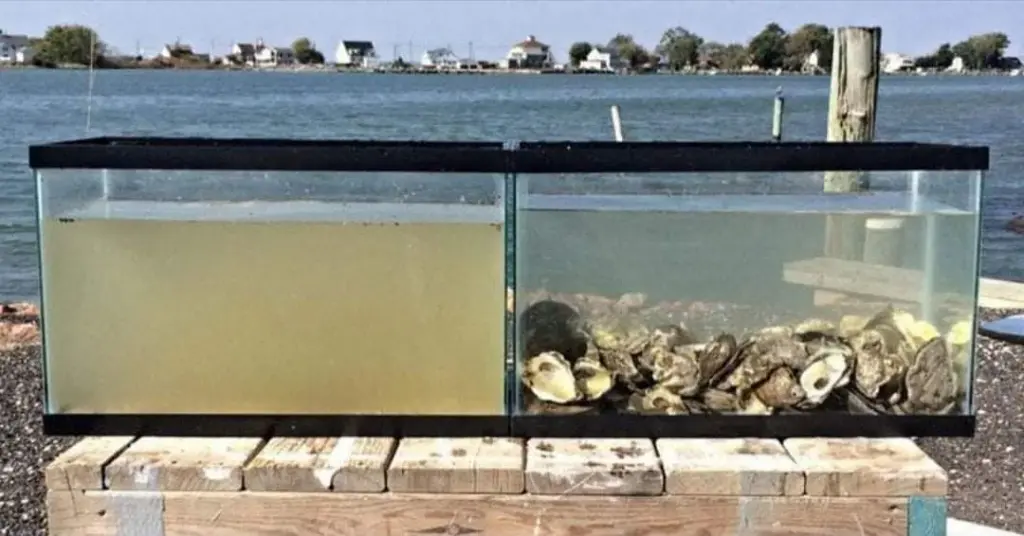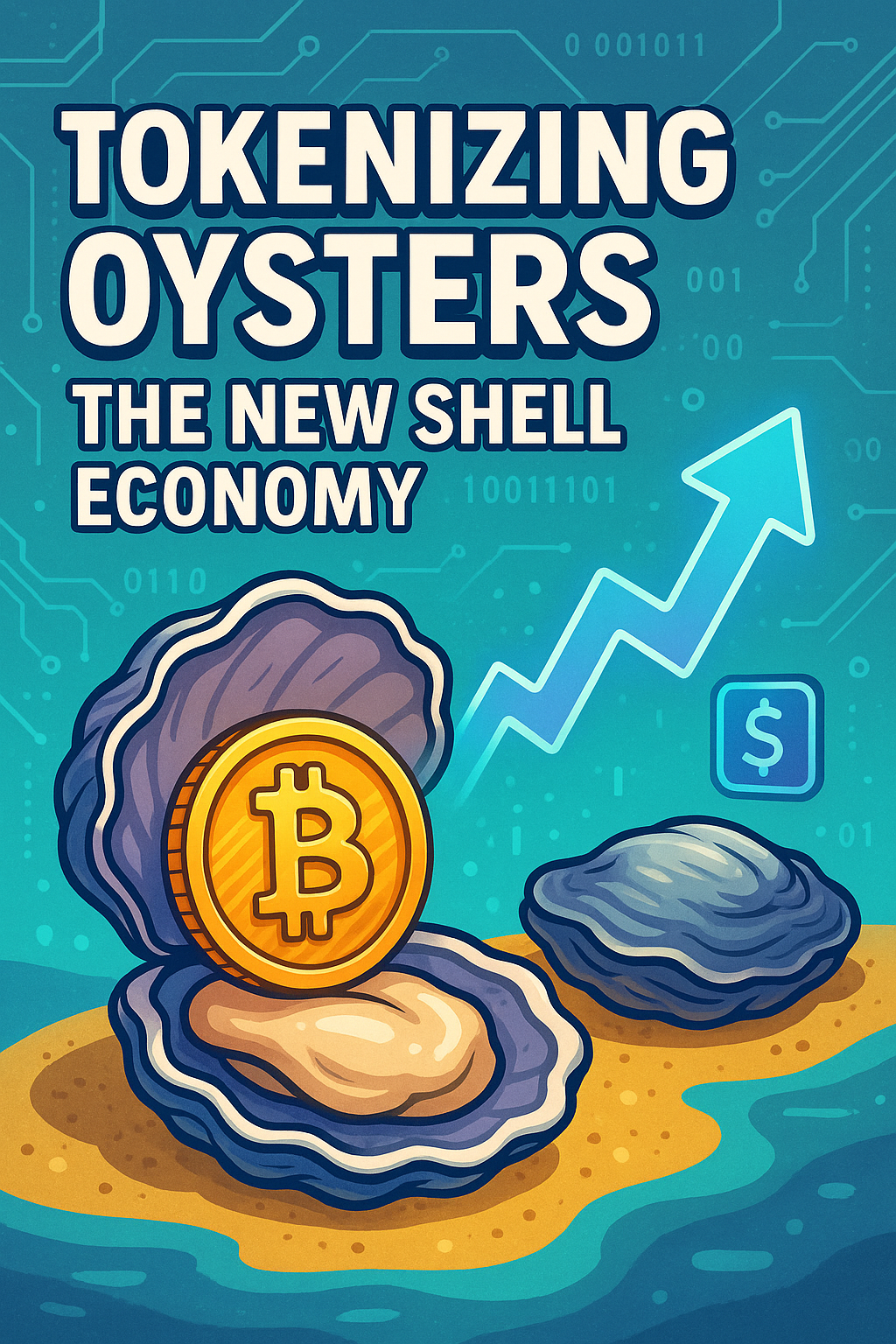A quiet but powerful revolution is underway beneath the surface of our coastal waters. Oysters—nature’s unsung heroes—are no longer just cleaning the water. With the help of blockchain, IoT sensors, and AI algorithms, they’re being transformed into digital assets that certify clean water and generate real-world environmental credits.
Welcome to the new shell economy—where biology meets bytes, and mollusks meet the metaverse.
🦪 From Bivalves to Blockchains
Each oyster can filter up to 50 gallons of water daily, removing harmful nitrogen, phosphorus, and algae that pollute rivers, bays, and oceans. However, until now, there has been no reliable way to track their contribution at scale or to monetize their value in clean water ecosystems.
Enter IoT + AI + blockchain: the tech trio powering a measurable and tradable oyster economy.

📡 IoT: Real-Time Monitoring Beneath the Waves
At the foundation of this ecosystem are IoT sensors—deployed on buoys, reef structures, and submerged networks. These devices capture continuous data on:
- Water temperature & salinity
- Dissolved oxygen and pH
- Flow velocity and turbidity
- Oyster growth and feeding behavior
This real-time stream transforms natural habitats into a living data grid, sending verified environmental information directly to cloud systems.
🤖 AI: Predict, Quantify, Optimize
Raw data alone isn’t valuable until it’s made actionable. That’s where AI comes in.
- Regression algorithms estimate the relationship between oyster activity and the removal of nutrients. For example, how much nitrogen is filtered under varying conditions of flow and temperature.
- Random forest algorithms classify oyster reef performance and predict filtration efficiency. These models detect anomalies—such as signs of disease—and forecast where oysters will perform optimally.
- Reinforcement learning adds adaptability. It enables AI agents to learn optimal deployment strategies by receiving feedback (rewards/penalties) from sensor inputs. Over time, the System evolves, dynamically improving oyster placement and maximizing water purification.
The result: a self-optimizing marine network, where filtration power is continuously predicted, measured, and verified with precision.
AI doesn’t just help quantify oyster impact—it proves it. That’s the key to trust in tokenized environmental credits. By merging biological science, blockchain, and AI, we can create a scalable, transparent system to restore water ecosystems and monetize their value.
🔗 Blockchain: Minting Truth into Tokens
Once AI confirms impact, it’s time to tokenize it.
Using decentralized networks like Hedera or XRPL, verified oyster filtration data is encoded into nutrient credits—digital tokens that represent a quantifiable unit of ecological value, such as:
- 1 gram of nitrogen removed
- 50 gallons of water filtered
- Verified contribution over 30 days
These credits can then be stored, audited, and traded transparently on-chain. Blockchain provides:
- Immutable verification of ecological performance
- Programmable smart contracts to automate payouts to oyster farmers
- Tradable environmental assets for industries seeking ESG offsets
The ecosystem transitions from a trust-based to a truth-based model, creating a market where water restoration earns value, just like solar panels or carbon credits.
💡 Verity One: Building Trust in the Shell Economy
Leading this innovation is Verity. One is a certification engine that uses AI, IoT, and blockchain to verify real-world environmental and manufacturing claims. From “Made in USA” labels to oyster-driven nutrient credits, Verity powers transparency where it matters most.
Through its oyster program, Verity certifies the filtration data, ensures its traceability, and anchors it on-chain, forming a backbone for trading verified clean water outcomes.
For a broader look at this transformation, revisit our earlier deep dive:
👉 Invest in Water, Powered by Oyster Tech
🌊 Why It Matters for Tech Investors
This Transforming isn’t just marine biology—it’s deep tech with real market impact:
- 🌱 $100B+ in global nutrient mitigation demand
- 💧 Tokenized RWAs backed by ecological performance
- 🧠 AI as alpha: better data = stronger credit value = investor upside
In a time of climate urgency and rising ESG accountability, tokenized filtration is emerging as a new commodity class. This Tokenizing is regenerative finance in action—turning natural processes into verified, bankable outcomes.
🎥 Watch It in Action
We share a YouTube video showcasing how oysters clean water in real time, visualizing how IoT sensors and AI models turn that action into measurable credits.
Stay tuned. The shell economy is just beginning to scale, and pearls of data power it.
